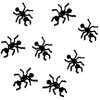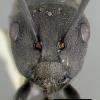Hi all,
I have a small colony of Camponotus quercicola. There is one queen, nine workers, six developed larvae (late instar), and 8 recently laid eggs, about 2 days old. Today, when taking a peek at them in their plastic hybrid nest, 4 to 6 of the adult workers appeared to be aggressively biting at and tugging upon one larva, but I wasn't observing any actual cutting. Mandibles were actively opening and closing on the larva's exoskeleton.
Is this behavior common? Do they sometimes turn on a larva to destroy it? It was really upsetting to watch, but so far I'm not seeing any damage (yet). This looks a lot more aggressive than simply cleaning and feeding the larva.
I am new to this hobby, having started with my first colony in February, so I know there's a lot to learn. This behavior today is new to me. Video is below:
https://www.youtube....h?v=hGCwHjN4p9w and https://www.youtube....h?v=iy3kthLZt1I
Edited by Spencer70, April 3 2019 - 7:52 PM.



















![Dspdrew's Camponotus laevigatus Journal [219] (Updated 12-4-2023) - last post by The_Gaming-gate](https://www.formiculture.com/uploads/profile/photo-thumb-8200.png?_r=1707171275)

